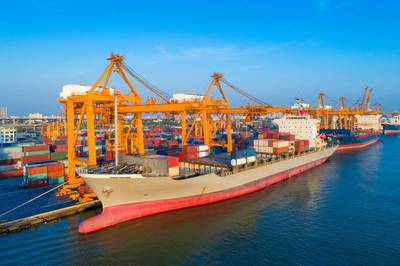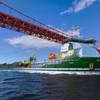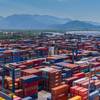The Time to Reduce Port Emissions is Now
Port operations across the country are vital to America’s economy, often coming at a cost to health and welfare of neighboring communities—notably, by emitting harmful emissions and producing poor air quality.
Incorporating propane can help ports support economic growth while safeguarding our environment.
The loading and unloading of container ships at marine terminals requires a variety of cargo handling equipment, historically powered by diesel and gasoline. As the country seeks to reduce emissions and fight climate change, stevedores need reliable, efficient equipment to help them handle growing cargo volumes, as well as an energy source that doesn’t sacrifice environmental impact in the process.
While battery-powered EV equipment is answer for some applications, there are significant challenges to be overcome and it is important to consider other “Near Zero” emissions options with ultra-low NOx, including propane equipment.
Propane offers ultra-low NOx “Near-Zero” emissions for port applications
Recently passed legislation outlining funding availability for ports infrastructure will help ports across the country make the switch to “Near Zero” emissions technologies and enable our ports to be better stewards of the environment today and into the future.
While many port authorities are making the jump to electrification thinking this equipment is the best solution for reducing emissions, they are likely unaware that propane is cleaner, with a reduced carbon footprint than electricity when lifecycle emissions and nominal electricity production emissions are taken into consideration. Using propane produces 43% fewer greenhouse gas emissions than using an equivalent amount of electricity generated from the U.S. grid, according to data from the Propane Education & Research Council (PERC).
Switching to cleaner energy directly impacts the millions of people living near ports. Families can be exposed to air pollution output from diesel engines at ports and be at risk of developing asthma, heart disease, and other serious health problems. Equipment, vehicles, and marine vessels that burn diesel fuel are the primary source of combustion-related emissions at port facilities, according to the Environmental Protection Agency (EPA). Existing propane applications in ports include forklifts and small and medium-duty vehicles that are meeting today’s emissions regulations and sustainability goals.
Near-zero emission propane port tractors produce fewer emissions and cost approximately $200,000 less than electric models, meaning ports can afford to replace more of their diesel-powered fleet and achieve carbon reduction goals faster. Propane powered cargo handling equipment in development includes reach stackers, empty container handlers, and rubber-tired gantry cranes.
Plus, propane can support employees needing to operate equipment both indoors and out, whereas gasoline and diesel equipment aren’t fit for indoor use. Propane forklifts, for example, can safely operate in properly ventilated indoor spaces, thanks to the equipment’s low-emissions profile. Well-maintained propane forklifts meet or exceed nationwide indoor air quality standards, whereas gasoline and diesel can produce higher amounts of carbon monoxide and other harmful emissions.
The Infrastructure Investment and Jobs Act
A new $1.2 trillion law to improve America’s infrastructure creates an unprecedented opportunity for more fleets to take advantage of low emission energy sources, like propane. Propane is recognized in the Act as a clean alternative energy source and its inclusion is a major win for both ports and near-port communities, allowing more ports and dockworkers the opportunity to replace the use of diesel and gasoline on-site.
With funding available as of January 2022, the Infrastructure Investment and Jobs Act provides over $9 billion in funding for refueling infrastructure and clean vehicles and equipment—including $5 billion earmarked for ports. Propane-powered vehicles and refueling infrastructure are eligible for the following funding opportunities under the new law:
- $2.5 billion in grants for emissions reduction at port facilities
- $2.5 billion in grants for charging and refueling infrastructure
Ports interested in taking advantage of this funding can make the switch to propane knowing that it’s a go-to energy solution for their operation. Propane reliably powers on- and off-road vehicles including forklifts, light- and medium-duty vehicles, port and terminal tractors, shuttles, and small marine vessels.
To learn more about propane and determine if it’s the right fit for your operation, visit Propane.com/Ports.
Joe Calhoun is director of business development for the Propane Education & Research Council. He can be reached at [email protected].












